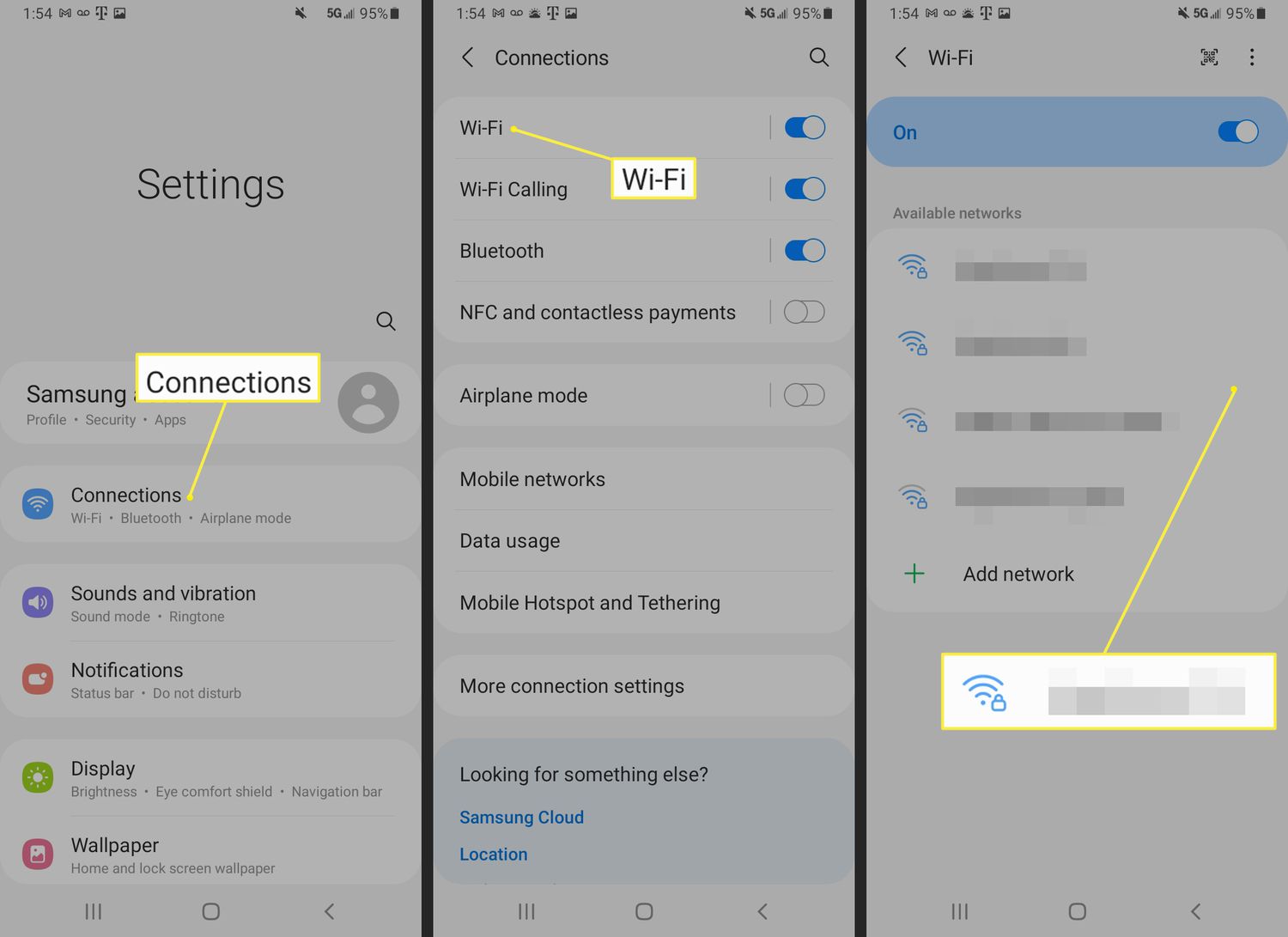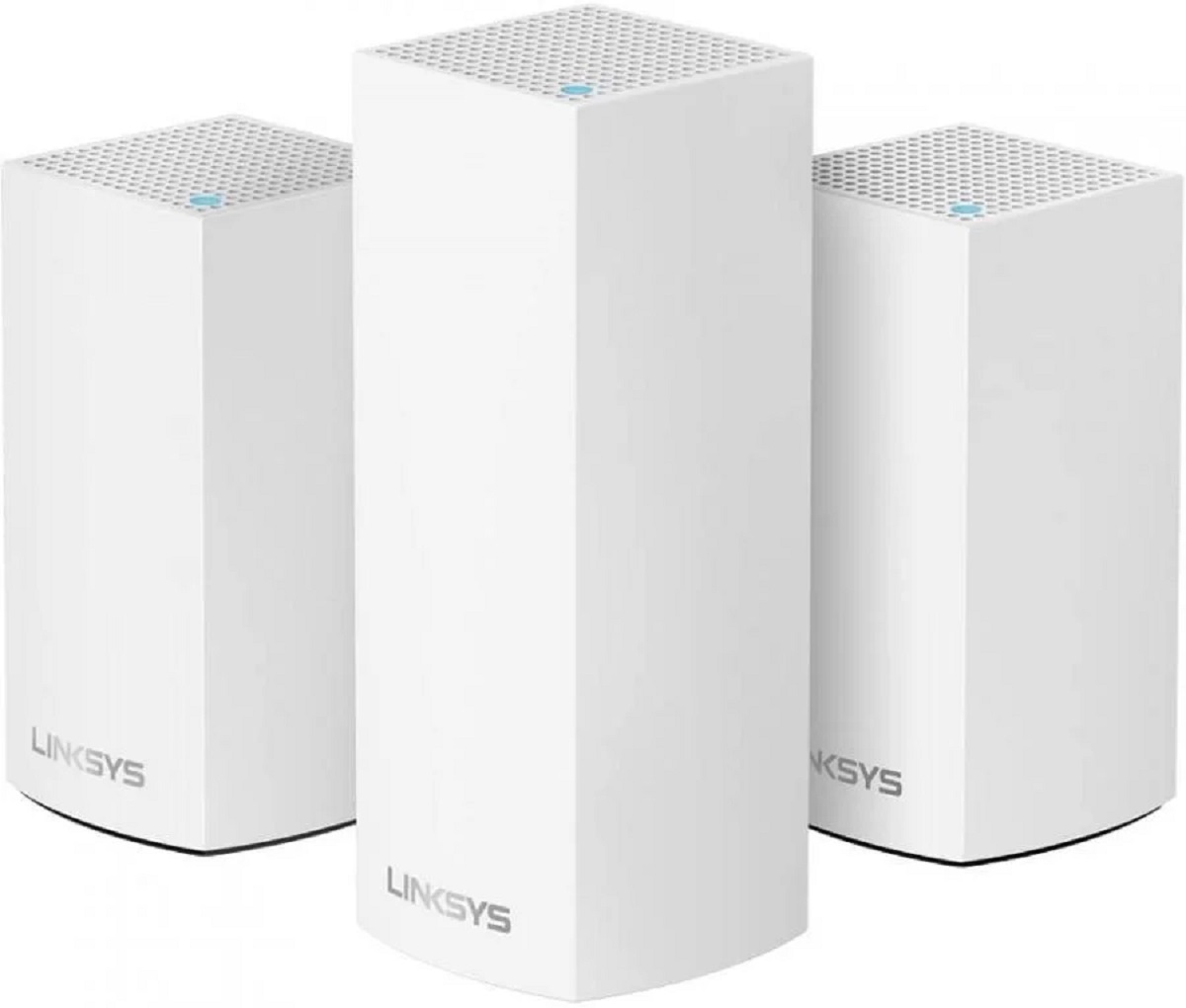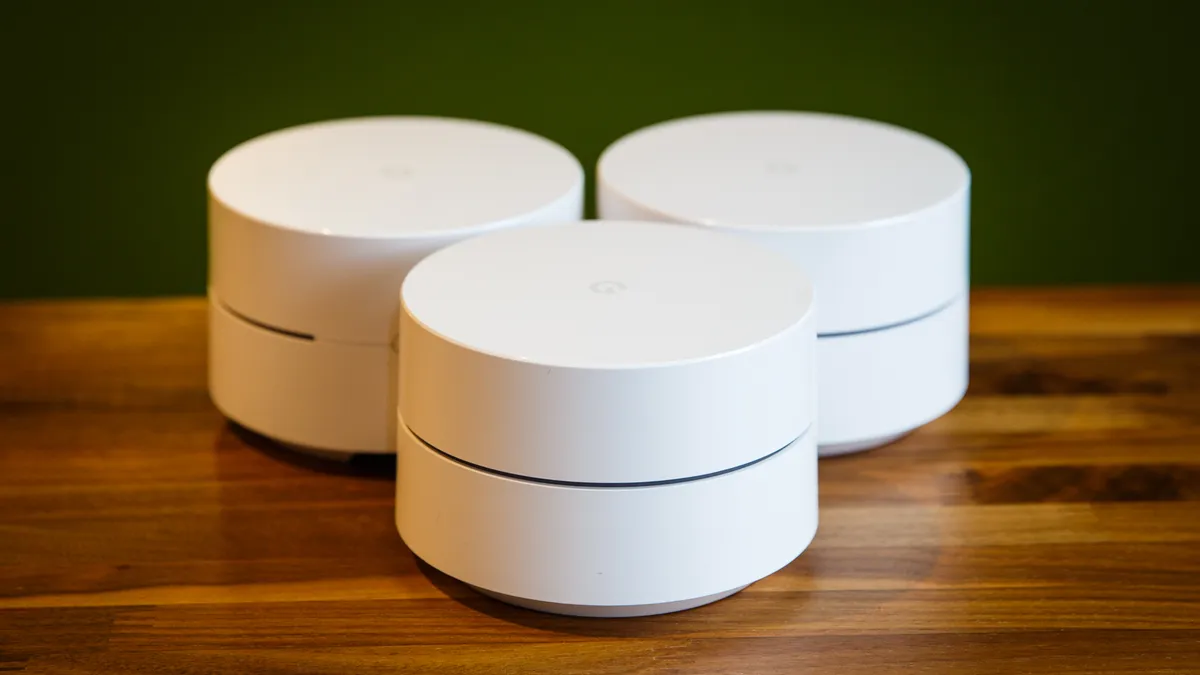Introduction
A Wi-Fi network has become an essential part of our daily lives, allowing us to connect to the internet without the need for cumbersome cables. Whether at home, in the office, or at a cafe, Wi-Fi provides us with the convenience of online access on our laptops, smartphones, and other devices. But have you ever wondered what exactly a Wi-Fi network is and how it works?
A Wi-Fi network, short for Wireless Fidelity, is a wireless technology that enables devices to connect to the internet or communicate with each other without the use of physical cables. It uses radio waves to transmit data between devices, providing a seamless and convenient way to access the online world. From checking emails to streaming videos, a Wi-Fi network has become an integral part of our digital lives.
So, how does a Wi-Fi network work? To put it simply, a Wi-Fi network consists of a wireless router or access point and multiple devices that are connected to it. The router acts as a bridge between the devices and the internet, transmitting data wirelessly between them. This enables devices within the network range to access the internet and communicate with each other.
The components of a Wi-Fi network include the wireless router/access point, wireless adapters in devices, and the communication protocols that govern the transfer of data. Together, these components work harmoniously to establish and maintain a stable and secure connection. In the following sections, we will delve deeper into these components and explore the various types of Wi-Fi networks and the benefits they offer.
Stay tuned as we uncover the fascinating world of Wi-Fi networks and unleash the potential they hold for our modern, connected lives. Whether you’re a tech enthusiast or simply want to understand the technology that keeps us all connected, this article will provide you with the insights you need to navigate the world of Wi-Fi networks.
What is a Wi-Fi Network?
A Wi-Fi network is a wireless network that allows devices to connect to the internet and communicate with each other without the need for physical cables. It is a convenient and widely used technology that has transformed the way we access information, communicate, and work.
At its core, a Wi-Fi network utilizes radio waves to transmit data between devices. It operates within specific frequency bands, typically 2.4 GHz or 5 GHz, to avoid interference from other wireless devices. The term “Wi-Fi” itself is a trademarked term coined by the Wi-Fi Alliance, the organization responsible for certifying Wi-Fi products.
Wi-Fi networks are commonly used in homes, offices, businesses, public spaces, and even on transportation systems. They provide wireless internet access to devices such as laptops, smartphones, tablets, smart TVs, and IoT devices. By connecting these devices to a Wi-Fi network, users can browse the web, stream videos, download files, and access various online services.
A Wi-Fi network consists of two primary components: a wireless router or access point and wireless adapters in devices. The wireless router acts as a central hub that connects devices to the internet and manages data traffic within the network. On the other hand, wireless adapters, also known as Wi-Fi adapters, enable devices to connect to the network and transmit/receive data.
Security is an essential aspect of Wi-Fi networks. As wireless signals can be intercepted, it is crucial to implement security measures to protect data and prevent unauthorized access. Common security protocols used in Wi-Fi networks include WEP (Wired Equivalent Privacy), WPA (Wi-Fi Protected Access), and WPA2. These protocols encrypt the data transmitted over the network, ensuring its confidentiality.
Wi-Fi networks have revolutionized the way we connect and communicate. They have brought unprecedented convenience and mobility to our digital lives. Whether it’s working remotely, conducting virtual meetings, or simply staying connected with loved ones, Wi-Fi networks have become an integral part of our daily routines.
In the following sections, we will explore the inner workings of Wi-Fi networks, including how they operate, the various components involved, and the benefits they offer. By understanding the fundamentals of Wi-Fi networks, you’ll be empowered to make informed decisions when it comes to setting up, securing, and troubleshooting your own Wi-Fi network.
How does a Wi-Fi Network work?
A Wi-Fi network operates by using radio waves to transmit and receive data between devices. It follows a specific set of protocols and standards to ensure seamless communication and efficient data transfer.
When you connect a device, such as a laptop or smartphone, to a Wi-Fi network, it sends a request to the wireless router or access point to establish a connection. The router processes this request and assigns the device an IP address, which serves as its unique identifier on the network.
The wireless router acts as a bridge between the devices and the internet. It receives data from the devices and transmits it over the airwaves using radio frequencies. These radio frequencies fall within specific frequency bands allocated to Wi-Fi usage, such as 2.4 GHz or 5 GHz. The device’s wireless adapter picks up these radio signals and decodes them back into data.
To ensure smooth data transfer, Wi-Fi networks use a variety of modulation and coding schemes. They employ techniques like Orthogonal Frequency Division Multiplexing (OFDM) to divide the available bandwidth into multiple sub-carriers, allowing for simultaneous data transmission. This helps mitigate interference and maintain stable and high-speed connections.
Wi-Fi networks also utilize various network protocols to enable communication between devices. The most common network protocol is the Internet Protocol (IP), which allows devices to exchange data packets over the network. Additional protocols, such as TCP (Transmission Control Protocol) and UDP (User Datagram Protocol), handle the transmission and reception of the data packets.
Security is a paramount concern in Wi-Fi networks to protect sensitive information and prevent unauthorized access. Encryption protocols, such as WPA2 (Wi-Fi Protected Access II) and its earlier versions, WPA and WEP, are implemented to secure the data transmitted over the network. These encryption protocols scramble the data, making it unreadable to anyone trying to intercept it without the proper decryption key.
Wi-Fi networks have evolved over the years to provide faster speeds, improved range, and better reliability. Advances like multiple-input and multiple-output (MIMO) technology and beamforming have enhanced the performance of Wi-Fi networks, allowing for faster and more stable connections, especially in crowded environments.
In a nutshell, a Wi-Fi network works by using radio waves to transmit and receive data between devices. With the right combination of hardware, software, and security protocols, Wi-Fi networks enable seamless communication and provide us with the convenience of wireless internet access wherever we go.
In the next sections, we will explore the various components involved in a Wi-Fi network and delve deeper into the benefits it offers. By understanding how Wi-Fi networks function, you’ll be better equipped to set up and optimize your own network for optimal performance.
Wi-Fi Network Components
A Wi-Fi network consists of several key components that work together to provide wireless connectivity and enable communication between devices. Understanding these components is essential for setting up and optimizing a Wi-Fi network.
1. Wireless Router/Access Point: The central component of a Wi-Fi network is the wireless router or access point. It serves as the gateway between the devices and the internet. The router receives data from devices and transmits it over the airwaves using radio frequencies. It also manages the network, assigns IP addresses to devices, and controls data traffic within the network.
2. Wireless Adapters: Wireless adapters, also known as Wi-Fi adapters, are built into devices like laptops, smartphones, and tablets. They allow these devices to connect to a Wi-Fi network and transmit/receive data wirelessly. Most modern devices come with built-in wireless adapters, but external adapters can also be added to devices that lack Wi-Fi capabilities.
3. Antennas: Antennas play a crucial role in a Wi-Fi network by transmitting and receiving radio signals. The wireless router, as well as wireless adapters, have built-in antennas to send and receive radio waves. Antennas can be external or internal, and their design and placement affect the range and signal strength of the Wi-Fi network.
4. Network Cables: While Wi-Fi networks primarily operate wirelessly, network cables are still important for connecting the wireless router to the internet and devices that do not have wireless capabilities. Ethernet cables are commonly used to establish a stable and high-speed connection. These cables connect the router to the modem, allowing the network to access the internet.
5. Network Protocols: Wi-Fi networks rely on various network protocols to ensure smooth communication between devices. The most common protocol used is the Internet Protocol (IP), which enables devices to exchange data over the network. Other protocols include TCP (Transmission Control Protocol) and UDP (User Datagram Protocol), which handle the transmission and reception of data packets.
6. Encryption and Security: Security is a critical aspect of Wi-Fi networks to protect data and prevent unauthorized access. Encryption protocols, such as WPA2, WPA, and WEP, are used to secure data transmitted over the network. These protocols encrypt the data, making it unreadable to anyone without the proper decryption key. Additional security measures, such as network passwords and firewalls, add layers of protection to Wi-Fi networks.
These components work together to create a Wi-Fi network that enables wireless connectivity and communication between devices. By understanding these components, you can optimize your network’s performance, troubleshoot issues, and ensure the security of your Wi-Fi network.
In the next sections, we will explore the benefits of Wi-Fi networks and the various types of Wi-Fi networks available. This knowledge will help you make informed decisions when setting up and utilizing Wi-Fi networks in different settings.
Benefits of a Wi-Fi Network
Wi-Fi networks offer numerous benefits that have revolutionized the way we live, work, and connect with the world around us. From convenience and flexibility to increased productivity and connectivity, Wi-Fi networks have become an integral part of our daily lives. Here are some of the key benefits of using a Wi-Fi network:
1. Wireless Connectivity: The primary advantage of Wi-Fi networks is the freedom from wires and cables. With a Wi-Fi network, you can connect multiple devices to the internet without the need for physical connections. This provides flexibility and convenience, allowing you to use your devices from anywhere within the network’s range.
2. Increased Mobility: Wi-Fi networks enable seamless connectivity on the go. Whether you’re at home, in the office, or in public spaces like cafes or airports, you can access the internet and stay connected with your devices. This freedom of movement allows for increased productivity and the ability to work or browse the web from various locations.
3. Multiple Device Connectivity: Wi-Fi networks allow multiple devices to connect simultaneously. Whether it’s laptops, smartphones, tablets, or IoT devices, you can connect them all to a Wi-Fi network and enjoy online access on each device. This convenience is particularly useful in households or workplaces with multiple users and devices.
4. Flexibility in Network Expansion: Wi-Fi networks can easily expand to accommodate new devices or cover larger areas. You can add additional wireless routers or access points to extend the coverage and ensure a strong signal throughout your space. This flexibility allows you to adapt your network as your needs grow or change.
5. Enhanced Productivity: Wi-Fi networks enable seamless sharing and collaboration. Multiple users on the same network can share files, printers, and other resources easily. This promotes teamwork and enhances productivity in both personal and professional settings, as it eliminates the need for physical transfers of data or resources.
6. Cost-Effective: Setting up a Wi-Fi network is generally more cost-effective than wiring an entire space with Ethernet cables. Wi-Fi allows for easy networking without the need for drilling holes or running cables, making it an efficient and cost-effective solution for homes, offices, and public environments.
7. Convenience for Guests: Wi-Fi networks can also provide guest access, allowing visitors to connect to the internet without the need for sharing your personal network’s password. This feature is particularly useful in offices or hospitality settings, where guests and clients frequently require internet access.
8. Seamless Internet Access: Wi-Fi networks provide continuous and uninterrupted internet access within the network’s range. This ensures a seamless browsing and streaming experience, without the need to rely on cellular data or switch networks between different locations.
Wi-Fi networks have undoubtedly transformed the way we connect and work. They offer convenience, flexibility, and the ability to stay connected wherever we go, empowering us to live a more connected and productive lifestyle.
In the following sections, we will explore the different types of Wi-Fi networks available and guide you through the process of setting up and troubleshooting your own Wi-Fi network, enabling you to make the most of the benefits Wi-Fi networks provide.
Types of Wi-Fi Networks
Wi-Fi networks come in various types, each designed to suit specific needs and environments. Understanding the different types of Wi-Fi networks can help you choose the most suitable option for your requirements. Here are some common types of Wi-Fi networks:
1. Personal/Home Wi-Fi Networks: Personal or home Wi-Fi networks are the most common type of Wi-Fi networks. They are designed to provide wireless internet access within a residence or small area, such as an apartment or a house. These networks typically have a single wireless router or access point that connects multiple devices for internet access.
2. Business/Enterprise Wi-Fi Networks: Business Wi-Fi networks are designed to handle increased traffic and support a larger number of devices. They are commonly used in offices, corporate settings, retail establishments, and other business environments. Business Wi-Fi networks often employ multiple access points and advanced management features for improved network performance and security.
3. Public Wi-Fi Networks: Public Wi-Fi networks are found in public spaces such as cafes, airports, hotels, libraries, and shopping centers. These networks provide internet access to visitors and customers. Public Wi-Fi networks often require users to agree to terms and conditions or enter a password to connect.
4. Campus/University Wi-Fi Networks: Campus or university Wi-Fi networks are designed to cover large areas such as college campuses, educational institutions, or research facilities. They offer widespread coverage, allowing students, faculty, and staff to access the internet across various locations within the campus. Campus Wi-Fi networks often require authentication and offer additional features like separate networks for administration and guest access.
5. Mesh Wi-Fi Networks: Mesh Wi-Fi networks consist of multiple interconnected access points or nodes that work together to provide seamless coverage over a larger area. This type of network is ideal for spaces with multiple floors, large homes, or offices, where a single wireless router may not provide adequate coverage. Mesh Wi-Fi networks ensure a strong and consistent signal by intelligently routing the data through the nodes.
6. Mobile Hotspots: Mobile hotspots, also known as portable Wi-Fi routers, enable internet access on the go. These devices use cellular network connections, such as 4G or 5G, to create Wi-Fi networks that can be accessed by multiple devices. They are useful when you’re in a location without traditional Wi-Fi access and need to connect your devices to the internet.
These are just a few examples of the different types of Wi-Fi networks available. The choice of the network type depends on factors such as the intended usage, the number of devices that need to connect, the desired coverage area, and the level of security required.
In the next sections, we will guide you through the process of setting up and securing a Wi-Fi network, as well as troubleshooting common issues that may occur. By understanding the different types of Wi-Fi networks, you’ll be better prepared to choose and configure the network that best meets your needs.
Setting Up a Wi-Fi Network
Setting up a Wi-Fi network may seem daunting at first, but with the right steps and guidance, it can be a straightforward process. Whether you’re setting up a network for your home or office, here’s a simplified guide to help you get started:
1. Determine the Network Requirements: Start by identifying your network requirements. Consider the number of devices that will connect to the network, the desired coverage area, and the internet speed you need. This will help you select the appropriate wireless router or access point for your network.
2. Choose a Wireless Router/Access Point: Select a wireless router or access point that suits your needs. Look for features such as dual-band support, support for the latest Wi-Fi standards (e.g., Wi-Fi 6), and the ability to handle the expected number of devices. Ensure the router has sufficient coverage range to cover your desired area.
3. Connect the Router/Access Point: Connect the router or access point to your modem using an Ethernet cable. This establishes the connection between your network and the internet. Follow the manufacturer’s instructions for proper setup and configuration.
4. Configure Wireless Network Settings: Access the router’s administration interface using a web browser. Enter the router’s IP address in the address bar. Log in using the provided credentials. Set up a unique network name (SSID) that will be visible to devices. Configure a secure password for network access to protect your network from unauthorized access.
5. Set Up Encryption and Security: Enable encryption protocols like WPA2 or WPA3 for data security. These protocols ensure that data transmitted over the network is encrypted and cannot be easily intercepted. Choose a strong encryption method (AES is recommended) and set a robust password for the network.
6. Connect Devices: Once you’ve set up your Wi-Fi network, you can connect devices to it. Enable Wi-Fi on your devices and search for available networks. Select your network from the list of available networks and enter the password when prompted. Once connected, your devices will have internet access through the Wi-Fi network.
7. Network Optimization: To optimize your Wi-Fi network, consider the placement of the wireless router or access points. Position the router in a central location for better coverage. Avoid obstructions like walls or large objects that can weaken the signal. Adjust the router’s antennas for optimal signal strength. Additionally, regularly update the router’s firmware to ensure you have the latest performance improvements and security patches.
By following these steps, you can set up a Wi-Fi network that suits your needs and provides reliable wireless connectivity to your devices. Remember to always prioritize security by using strong passwords, enabling encryption, and keeping the router’s firmware up to date.
In the next section, we will explore common issues that can arise with Wi-Fi networks and provide troubleshooting tips to help you resolve them and maintain a stable and secure connection.
Troubleshooting Wi-Fi Network Issues
While Wi-Fi networks are generally reliable, occasional issues may arise that affect connectivity and performance. Here are some common Wi-Fi network issues and troubleshooting tips to help you resolve them:
1. Slow or Weak Wi-Fi Signal:
- Check the placement of your wireless router. Ensure it is positioned in a central location and away from obstacles that can block the signal.
- Adjust the router’s antennas to optimize the signal strength.
- Reduce interference from other devices by keeping the router away from cordless phones, microwaves, and other electronics.
- Make sure you’re using the appropriate Wi-Fi frequency band. 5 GHz provides faster speeds but shorter range, while 2.4 GHz offers better coverage but slower speeds.
- Consider using a Wi-Fi extender or mesh network to extend the coverage area of your Wi-Fi network.
2. Intermittent Connectivity:
- Restart your router and devices. Sometimes a simple reboot can resolve connectivity issues.
- Check for firmware updates for your router. Updating the firmware can address bugs and improve performance.
- Ensure that the wireless channel your network is using is not congested. You can change the channel settings in your router’s administration interface.
- Remove any potential sources of interference, such as other wireless devices or appliances.
3. Connection Drops:
- Verify that all cables connecting the router and modem are securely plugged in.
- Restart your router and devices to refresh the network connection.
- Remove any unnecessary devices or applications that may be overloading the network.
- Consider upgrading your router if it is older or does not support the number of devices on your network.
4. Unable to Connect to Wi-Fi:
- Ensure that the correct network SSID and password are entered when connecting to the Wi-Fi network.
- Double-check that the wireless function is enabled on your device and that Airplane Mode is turned off.
- If you’re still unable to connect, try restarting your device and router.
- If the problem persists, try forgetting the Wi-Fi network on your device and then reconnecting to it.
5. Poor Signal Range:
- Consider using Wi-Fi range extenders to extend the coverage area of your network.
- Upgrade to a more powerful wireless router that offers better range and coverage.
- Use additional access points strategically placed throughout your space for improved coverage.
If you’ve tried these troubleshooting tips and are still experiencing issues, it may be helpful to contact your internet service provider or consult the manufacturer’s support documentation for further assistance.
By addressing these common Wi-Fi network issues, you can ensure a stable and reliable wireless connection for all your devices and enjoy uninterrupted internet access.
In the final section, we’ll summarize the key points covered in this article and reiterate the importance of optimizing and maintaining your Wi-Fi network.
Conclusion
Wi-Fi networks have transformed the way we connect to the internet and communicate with each other. From the convenience of wireless connectivity to the flexibility of accessing the internet on multiple devices, Wi-Fi networks have become an integral part of our daily lives.
Throughout this article, we have explored the fundamentals of Wi-Fi networks, including what they are, how they work, and the various components involved. We have also discussed the benefits of Wi-Fi networks, such as increased mobility, productivity, and seamless internet access.
Moreover, we have examined the different types of Wi-Fi networks, from personal and business networks to public and campus networks, understanding their unique features and applications. We have also covered the process of setting up a Wi-Fi network, including choosing the right equipment and configuring network settings for optimal performance and security.
In addition, we have provided troubleshooting tips for common Wi-Fi network issues, empowering you to address slow or weak Wi-Fi signals, intermittent connectivity, connection drops, and other challenges that may arise. By following these steps, you can maintain a stable and reliable Wi-Fi network.
As technology continues to advance, Wi-Fi networks will only become more integral to our connected world. Whether it’s for remote work, online learning, or staying connected with friends and family, having a robust and secure Wi-Fi network is essential.
Remember to prioritize the security of your Wi-Fi network by using strong passwords, enabling encryption protocols, and regularly updating your router’s firmware. By doing so, you can protect your network and safeguard your personal information.
We hope this article has provided you with valuable insights into the world of Wi-Fi networks. Whether you’re a tech enthusiast or a novice user, optimizing and maintaining your Wi-Fi network will ensure a seamless and enjoyable online experience.
Thank you for joining us on this journey through Wi-Fi networks. Embrace the power of wireless connectivity and embrace the possibilities it brings to your digital life.

























